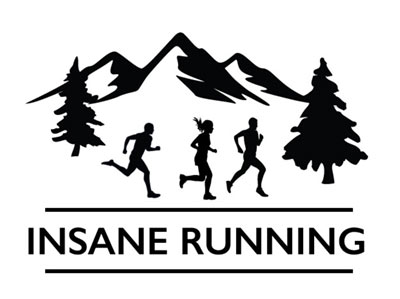Relentless to 100: Week 12
We are more than halfway there, just 12 more weeks to showtime. This is the perfect time to do an assessment around the progress, relative to the plan and how you are feeling after the different training runs and activities.
This is part of a series of posts regarding how we prepare, plan, and train to complete the 100 miles Ultramarathon Umstead 100: Relentless to 100. For all the ultrarunning series, here is Relentless to 100, last week’s post, and for additional ideas, follow the link. Training for a 100.
It’s a great opportunity to check on the fuel and hydration plan for the event and how are the weight and diet going. Are you finding it easy to maintain your goals?
Assessment:
Be honest at this stage as it is the setup for the next few weeks towards peak week and taper weeks.
- Have you been able to complete all training runs according to plan? More? Less? All? Some? This will help to understand what to do next. Do you need to re-access or continue as prescribed?
- How have you been feeling after the runs? Especially the back-to-back long runs. Do you feel like you could do one more? Do you feel depleted? How was starting the second long run?
- Are there any nagging issues? Chafing? Soreness? Is it acute pain? Is it changing your form when running? Or when walking? Does it go away after warming up?
- Is the running fuel settling well? Do you have a variety of options? Do you know what does not work?
- How is the hydration before, during, and after? Have you weighed yourself before and after the long runs? Are you replenishing well during the run? What about after? Are you losing too much weight?
Once again, the answers will help you get ready for the next step of the planning session.
Planning:
With some honesty and a sprinkle of reality, the main block questions to plan are,
Block #1 Training Plan
- Do you believe continuing toward the main 100-mile event is still valid? – If yes, go to the next block, if the answer is No, then continue with the next questions.
- Do you have to push just a little bit extra to still get back on track toward the 100? – If yes, re-adjust the plan. Keep in mind that the higher the adjustment/push, the probability of success and risk of risk increases. Be realistic, and if it still feels like too much, continue to the ne last couple of questions.
- Do you need to drop to a shorter distance? – If adjusting the plan makes it very unrealistic that you will be able to get back on track, it is ok to change to a shorter distance. Most Ultras will have multiple distances, 100k, 50M, or 50k. Something is better than nothing. Then you can focus and readjust your training.
- Do you need to drop off the event? – It is ok to drop from an event. You might get a refund, partial refund, or a deferral for next year’s event.
Block #2 Recovery
- Are you feeling refreshed enough to continue as is? Do you feel like the current approach is working? If yes, go to the next block.
- What options do you have at your disposal? An extra rest day? Are you having full rest days?
- Have you considered a proactive PT visit? Deep tissue massage?
- Some pool running to lessen the stress level and load of running.
Block #3 That nagging issue
- Now that you have determined those issues, can you proactively do something to prevent them? Add extra Glide/Lube. Could you use taping to prevent those?
- Do you need additional equipment? Like gaiters, better socks, arm compression, calf compression, and better rollers.
- Do you need to visit a PT or trainer to address the issue? Do you need to visit the doctor or a specialist?
- Plan all the necessary adjustments and test them in the upcoming short runs and progressively during the long runs. We are still early enough to try a few things before it turns into more problematic closer to the event.
Block #4 Fuel and Hydration
- Hopefully, by now, there are at least a few items you can use to fuel your options list. Check for the calorific value and plan to take it accordingly.
- Think outside the box; some other options or items like pop-tarts, breakfast bars, protein bars, fruit, or beef jerky could be alternatives to consider. Even homemade granola bars and honey sticks can sometimes be bought at the fresh market.
- Make a list of the order in which you would like to take them.
- Order or procure those items ahead of time. Especially those you know will be using. The last thing you want to happen is not having them available due to being in stock or delivered after the event.
- How much weight are you losing during the runs? It may be an indication of hydrating. Similar to pre-run weight, are you replenishing the necessary nutrients between runs? This is most important between the back-to-back long runs.
- Try different flavors of water. It does not have to contain electrolytes; if you can get fluid mixed in with some flavored powder like Kool-Aid, that is better than nothing. Whether sugary or sugar-free, be aware of the calorific intake. Also plan to perhaps use salt tablets in case you opt to only drink flavored water without electrolytes.
- Plan and test the new options as early as possible.
- Plan for the last few long runs so you can put in place your race fuiling plan in place.
- Plan not to use similar fuel during the taper weeks. You want to prevent the taste from becoming bland due to continuous usage. By using another fuel strategy during taper, you might increase the chances that the selected fuel will taste and go well during the vent.
This week’s actual numbers:
| Week 12 | Mon | Tue | Wed | Thur | Fri | Sat | Sun | Total |
| Plan | 6 | 6 | Rest | 3 | 6 | 13 | 26 | 60 |
| Actual | ? | 0 | Walk | ? | ? | ? | ? | ? |
Next Week Plan:
| Week 11 | Mon | Tue | Wed | Thur | Fri | Sat | Sun | Total |
| Plan | Stretches & Rolling | 6 | 5 | Rest | 6 | 14 | 24 | 55 |

